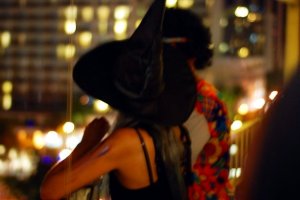Every time I grab my camera to go out shooting, I have this itch to capture the perfect image; being present (with a camera) in an instance where all elements come together like conniving trollops to my advantage.
Today I was walking near the Palace Gardens when I saw a woman wearing a pure white bourgeoisie striped sash dress, strolling down near the canal. Then a man approached her, they warmly hugged each other, and then she grabbed him by the throat jokingly pretending she is struggling him. He went along with the joke and he acted as if he is been brought to his knees. For a moment I felt I was in the middle of a movie scene but to my dismay no cameras were around, literally. I myself had decided to leave mine at home for the day.
Approaching people and ask them to be photographed it has always been difficult for me, and to date I have not been able to be assertive towards asking people for their photo to be taken. In street photography projects I generally choose a bird’s eye view, or photograph people who are involved in some activity, and not having the time to be aware of the camera. That way the subjects being photographed will appear in a natural fashion, and the photographer will have the time to concentrate on composition, angle of view, and distance.
Another easy way to sharpen my people’s photography skills are friend’s events and parties. Provided I will not charge anyone for the photos, and share them in an online photo album, most people will even pose for a photo. That practice, in itself is among other things, a great marketing tool. Even in the digital world a good word of mouth will take you much further than some web based advertising plan. Be polite to your human photographic subjects, approach them with professionalism and kindness, and also respect their right to not wanting to have their photo taken. Especially when children are involved make sure you take permission from a supervising adult before you start releasing the shutter button away. Those who allow you to be part of your photo, inform them of where they can see the photo loaded online, or make it easy on them to communicate with you via email or phone.
Until the next post, I wish you a wonderful time! Should you like to reach me for comments you can do it through this post, or at my email nikitasphoto[at]gmail.com



